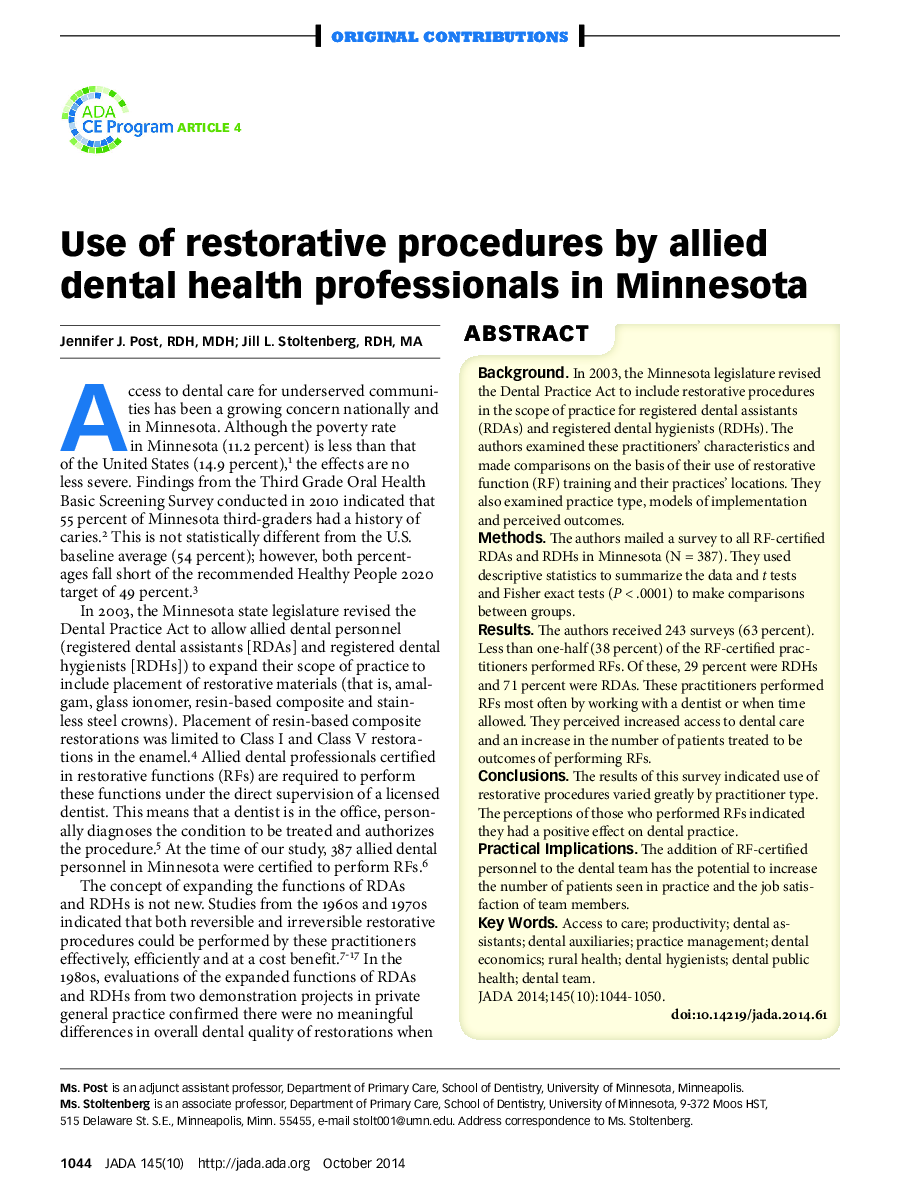| Article ID | Journal | Published Year | Pages | File Type |
|---|---|---|---|---|
| 3136766 | The Journal of the American Dental Association | 2014 | 7 Pages |
ABSTRACTBackgroundIn 2003, the Minnesota legislature revised the Dental Practice Act to include restorative procedures in the scope of practice for registered dental assistants (RDAs) and registered dental hygienists (RDHs). The authors examined these practitioners' characteristics and made comparisons on the basis of their use of restorative function (RF) training and their practices' locations. They also examined practice type, models of implementation and perceived outcomes.MethodsThe authors mailed a survey to all RF-certified RDAs and RDHs in Minnesota (N = 387). They used descriptive statistics to summarize the data and t tests and Fisher exact tests (P < .0001) to make comparisons between groups.ResultsThe authors received 243 surveys (63 percent). Less than one-half (38 percent) of the RF-certified practitioners performed RFs. Of these, 29 percent were RDHs and 71 percent were RDAs. These practitioners performed RFs most often by working with a dentist or when time allowed. They perceived increased access to dental care and an increase in the number of patients treated to be outcomes of performing RFs.ConclusionsThe results of this survey indicated use of restorative procedures varied greatly by practitioner type. The perceptions of those who performed RFs indicated they had a positive effect on dental practice.Practical ImplicationsThe addition of RF-certified personnel to the dental team has the potential to increase the number of patients seen in practice and the job satisfaction of team members.
